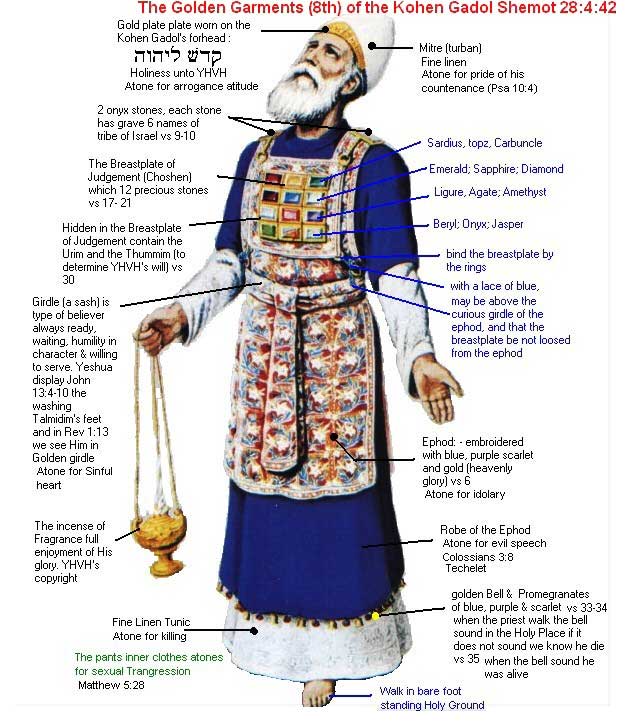The Vestments of the Israelite High Priest
Question: Why does the bishop wear bells on his vestments?
As with much of our worship, this has its origins in the worship of the Old Testament. In the Law of Moses, God directed Moses to make the liturgical garments of Aaron, the first High Priest (ἀρχιερεύς, archiereus), as follows:
"“You shall make the robe of the ephod all of blue. There shall be an opening for his head in the middle of it; it shall have a woven binding all around its opening, like the opening in a coat of mail, so that it does not tear. And upon its hem you shall make pomegranates of blue, purple, and scarlet, all around its hem, and bells of gold between them all around: a golden bell and a pomegranate, a golden bell and a pomegranate, upon the hem of the robe all around. And it shall be upon Aaron when he ministers, and its sound will be heard when he goes into the holy place before the Lord and when he comes out, that he may not die." (Exodus 28:31-35).
Since the High Priest entered into the Holy of Holies alone, the bells allowed those on the outside to at least hear the sound of the sacred actions that they could not see. The statement "that he may not die" may suggest that the ceasing of the bells would alert those outside of the holy of holies that the high priest had died. However, the way this is worded, it would more likely suggest that in some way the bells would prevent the High Priest from dying.
In the book of Ecclesiasticus (also known as the Wisdom of Sirach), it speaks of Aaron's vestments, and gives us at least one reason for the bells:
"He clothed him in perfect splendor, and strengthened him with the symbols of authority, the linen undergarments, the long robe, and the ephod. And he encircled him with pomegranates, with many golden bells all around, to send forth a sound as he walked, to make their ringing heard in the temple as a reminder to his people" (Ecclesiasticus 45:8-9).
So in what way could the bells save the High Priest from death, and also serve as a reminder to the people?
Blessed Theodoret provides the answer:
"He also clad the priests in the most comely attire to impress the people with their extraordinary appearance and to teach the priests how to beautify the soul and bedeck it with the adornment of virtue. By "undergarment" he referred to the inner, and by "outer garment" to the outer tunic. He commanded the latter be blue in color and called it "full length," because it reached to the top of the feet. To this he attached golden bells and pomegranates so that, on entering the unapproachable precincts and hearing the sound issuing from these, Aaron might celebrate the rite with reverence and call to mind him who had commanded these things and who was to receive the worship being offered" (Theodoret of Cyrus,trans. Robert C. Hill, The Questions on the Octateuch, vol. 1, On Genesis and Exodus, (Washington, D.C.: Catholic University of America Press, 2007), p. 323).
